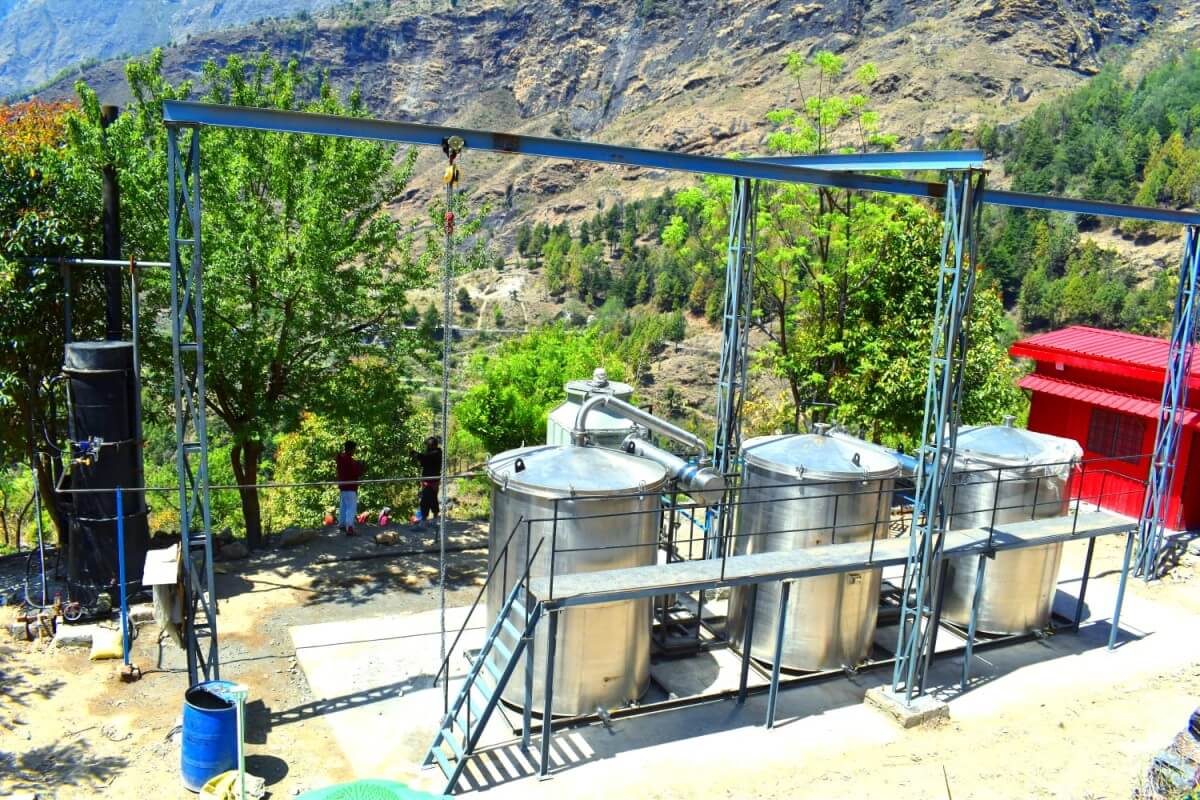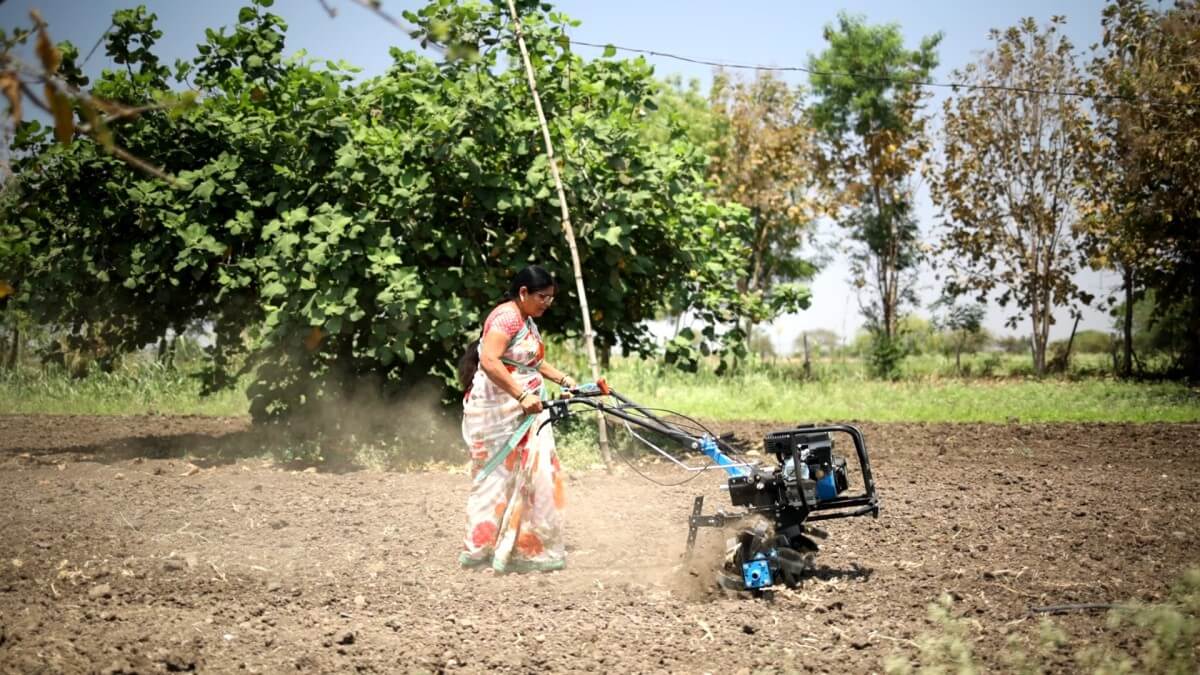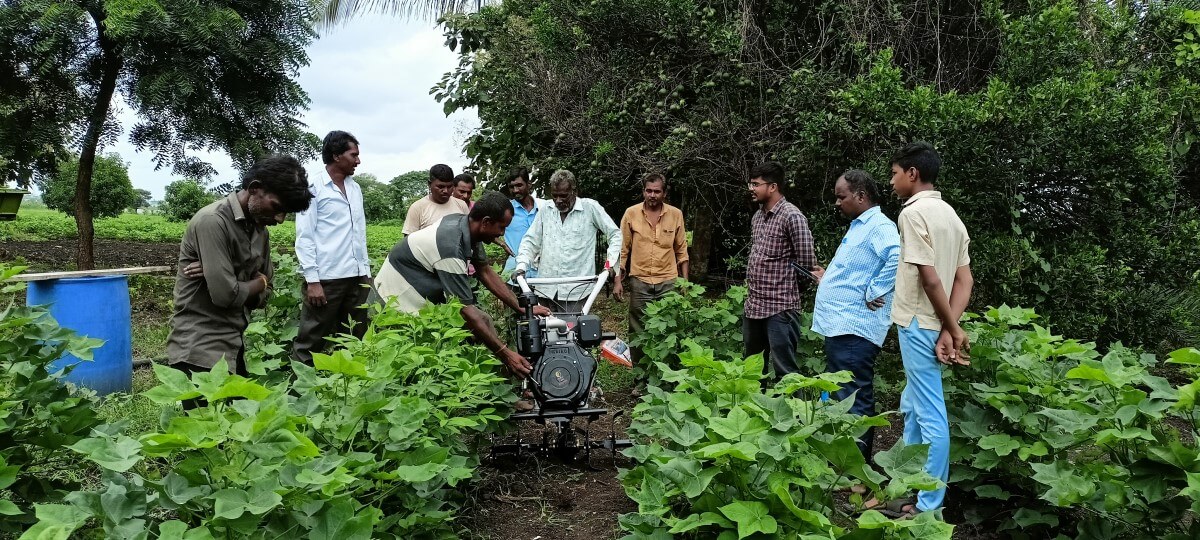Restoration Champions Driving Impact: Operational Models for Sustainable Growth
by , e -
Land restoration-based enterprises help protect forests, restore agricultural lands and common lands that are facing multiple challenges such as degradation, fragmentation, declining productivity, biodiversity loss and soil erosion. These enterprises leverage innovative technologies and practices to also provide resilient livelihood opportunities for local communities and increase their adaptability and preparedness against climate shocks.
The fourth edition of Land Accelerator South Asia – a unique program that supports land restoration-based businesses – features 22 enterprises offering diverse and innovative land restoration solutions. These include agroforestry, farm digitization and precision farming, affordable farm mechanization, satellite- and drone-based monitoring, bio inputs for soil health, value chain development for non-timber forest products (NTFPs), control of invasive plant species, and circular economy solutions for sustainable farm and forest management.
Globally, impact enterprises employ several distinct frameworks and operational models. Some of these operational models have been identified using a ‘practice to theory’ approach and described by Sutia Kim Alter in the chapter, ‘Social Enterprise Models and Their Mission and Money Relationships’ from the book Social Entrepreneurship - New Models of Sustainable Social Change. The design of the operational models considers a myriad of internal and external factors, including the mission and vision of the organization, market dynamics, available resources, market opportunities and threats, profit potential, stakeholder needs, policy environment, legal considerations and more.
These models can serve as prototypes for replication, casting a guiding light for others in the field and can also inspire the exploration of novel approaches for creating lasting impact. We discuss a few of these operational models through the examples of the land restoration-based enterprises that were supported by the Land Accelerator South Asia 2023. These exemplary cases demonstrate the diverse types of interactions with key stakeholders – smallholder farmers, rural community, women farmers, etc. – and the market, that have helped them create impact.
1. Market Intermediary Model
The market intermediary model operates by providing vital services, such as infrastructure for value addition, branding and marketing to key stakeholders, primarily comprising small producers, helping them develop products and access markets. The enterprises adopting this model also add value to the products through advanced processing technologies, quality control measures and strategic brand building.
For instance, Agrinet Foods and Beverages Pvt. Ltd. under its ‘Fragrant Chamoli’ project in Uttarakhand helps farmers rejuvenate unproductive agricultural lands that are invaded by weeds, by restoring them with essential oil crops. Its digital technology-enabled 'Soil to Oil' supply chain model enables restoration by growing aromatic plants and producing essential oil at a nearby distillation plant for sale in global markets. This ensures better yields and price realization for farmers. Similarly, KumaonKhand AIH Pvt. Ltd. actively employs this model by creating a seed-to-store ecosystem for hemp by developing a wide range of value-added products in fashion, food and personal care, from hemp and hemp seeds. In doing so, they play a pivotal role in providing local resource-based employment and sustainable livelihood opportunities for marginalized groups such as women and small farmers, thus also addressing the pressing issue of out-migration prevalent in the state of Uttarakhand through a sustainable hemp value chain.

2. Entrepreneur Support Model
The entrepreneur support model operates by offering products and/or services designed to support needs of key stakeholders comprising of self-employed individuals such as smallholder farmers. Enterprises specializing in agricultural and soil inputs frequently employ the entrepreneur support model. REVY Environmental Solutions Pvt. Ltd. helps farmers address the persistent issue of managing residues from previous crops in an affordable and environment-friendly way, while preventing stubble burning and enriching the soil with nutrients for upcoming planting seasons through its bio-decomposer that converts crop residue into bio-compost. AgrowSure Products and Innovations Pvt. Ltd. focuses on delivering affordable and diverse farm mechanization solutions for different crops and farming practices, specifically designed for small and marginal farmers. Their simple and versatile solutions are effective in improving farm productivity and profitability and enhancing soil quality at affordable costs. This ensures wider use of the farm machinery across different crops in different seasons, bringing more unproductive land -- for instance, infested by invasive species-- into cultivation.

3. Cooperative Model
The cooperative model directly benefits its key stakeholders or ‘members’ by offering technical assistance, extension services and access to shared resources. In this model, the members – considered primary stakeholders – share common or similar needs, fostering a sense of collective ownership and collaboration.
The Lekope Majuli Women Farmer Producer Company Ltd., a women’s collective enterprise with over 600 shareholders hailing from more than 30 villages across the river island of Majuli in Assam employs a similar model. This collective helps build market linkages for farm products, handloom, and handicraft products, and strategically organizes its members, strengthening their collective bargaining power and facilitating access to new opportunities. The company is also driving sustainable agriculture through agroforestry and plays a pivotal role in building the resilience of the vulnerable Majuli island – which is vulnerable to flooding and severe erosion – and its local communities.
4. Fee-for-service Model
The fee-for-service model commercializes its services and directly sells them to the key stakeholders, which may include individuals, firms or communities. The fee charged for the service is the revenue of the company.
Ignisnova Robotics Pvt. Ltd. offers farm advisory services to farmers through its Software as a Service (SaaS) platform for precision farming that integrates data from farm operations, weather stations and ground sensors to help tea growers make informed decisions, achieve efficient utilization of resources, improve productivity and reduce input costs.
5. Combination Models
Enterprises often leverage the strengths of multiple operational models to amplify their impact potential. For example, BuzzWorthy Ventures Pvt. Ltd. addresses two critical challenges encountered by small beekeepers – one, bridging information gaps in hive health management, disease diagnosis and honey production through an AI-powered mobile app, and two, establishing market connections through aggregation and fair-trade practices. The enterprise delivers these solutions by merging the entrepreneur support model, by supporting the apiarists with scientific advisory, with the market intermediary model, through their ‘fair forward market linkages’.
It is important to note that while we have outlined distinct operational models, there can be nuances and overlaps in their design and application. Categorizing enterprises under these different models serves to identify their predominant operational strategies without limiting them exclusively to any one model; combination models signify a dynamic balance where multiple strategies have considerable influence on an enterprise's operations.
These tried-and-tested operational frameworks serve as valuable lenses to understand how enterprises organize themselves to deliver impact. They are not meant to confine entrepreneurial thinking but rather inspire innovative approaches to tackling social and environmental issues while creating economic value.

Over 100 million hectares of India’s total land offers a potential for forest protection and landscape restoration. This presents a unique opportunity for restoration-based startups to innovate with businesses that are profitable, equitable and sustainable. The different operational models discussed in this article are just some of the ways in which the ingenuity and entrepreneurial spirit of young restoration-based start-ups can be shaped.
By creatively adapting and combining these models to suit their unique contexts and aspirations, entrepreneurs can tailor their operations to maximize impact and unlock the immense potential of India’s restoration economy. Such frameworks and models can spur entrepreneurs to think beyond boundaries, fostering fresh, creative strategies aligned with their passion for driving positive impact.
All views expressed by the authors are personal.


